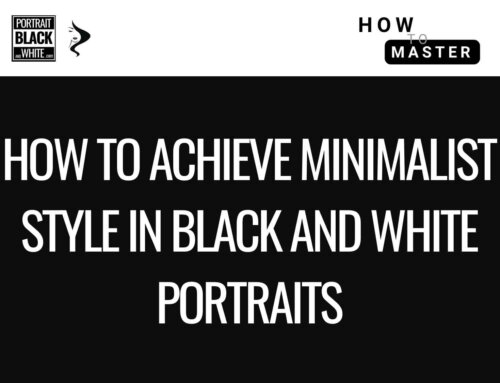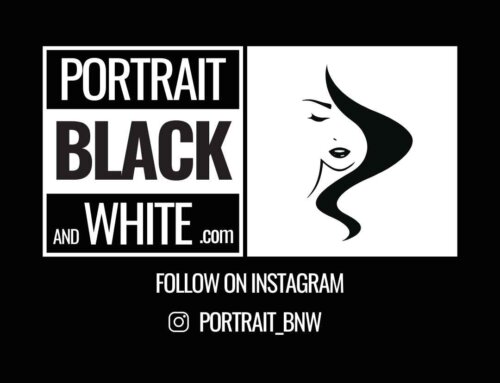Natural light has a unique character in black and white portraiture. It is unpredictable, sometimes harsh, sometimes soft, and always changing. Yet, it is also one of the most rewarding tools for photographers who want their portraits to feel alive, authentic, and timeless. Learning how to read and adapt to natural light throughout the day is a skill that transforms portraits from flat or ordinary into images filled with depth and emotion.
This guide explores how different times of day affect monochrome portraits and how to work with each condition without losing detail or subtlety.
Morning Light – Gentle and Honest
Early morning light is soft, low in contrast, and slightly cool in tone. For black and white portraits, this translates into a forgiving palette with smooth gradations between shadows and highlights.
-
Advantages: Faces appear fresh and evenly lit. Shadows are long but soft, creating gentle modeling around cheekbones and jawlines. The cool quality often adds clarity and calm to the mood of a portrait.
-
Challenges: The softness can sometimes result in portraits that feel too flat. Without some form of directional emphasis, the subject may blend into the background.
How to use it effectively:
Position the subject at a slight angle to the sun, so that shadows create enough contour around the face. Even in morning light, adding a bit of negative fill (a dark surface or object near the shadow side) increases dimensionality. Try using the long natural shadows cast on the ground as compositional elements—they can frame the subject without needing artificial props.
Midday Sun – Harsh but Sculptural
No time of day intimidates photographers more than midday. The sun is overhead, shadows fall directly downwards, and contrast is extreme. In color photography, this often leads to blown highlights and unflattering tones. In black and white, however, midday light can become powerful if approached with intent.
-
Advantages: Strong light shapes faces into sculptures, emphasizing bone structure. Used creatively, it adds drama and boldness to a portrait.
-
Challenges: Harsh shadows under the nose, chin, and eye sockets. Skin can look oily or overexposed. Many details risk being lost if exposure isn’t carefully managed.
How to use it effectively:
Search for partial shade rather than full shade. A tree canopy, the edge of a building, or even a doorway can transform midday into usable light. This creates pockets of softer contrast while retaining the strength of directional illumination. Alternatively, embrace the harshness: allow the deep eye sockets and sharp jawline shadows to become part of the story, especially if the portrait aims for a raw or documentary feel. Expose carefully for the highlights—shadows can often be pulled back in post, but clipped highlights in monochrome rarely recover gracefully.
Afternoon Light – Warm and Dynamic
Afternoon light begins to mellow compared to midday but still carries intensity. For black and white portraits, this is an opportunity to capture both structure and subtlety, depending on the angle and environment.
-
Advantages: Shadows lengthen, faces gain contour, and light becomes directional again. The balance between softness and strength makes it versatile.
-
Challenges: Depending on the season, afternoon light can still be quite strong, especially in open spaces. If uncontrolled, it risks flattening skin tones or blowing highlights on foreheads and cheeks.
How to use it effectively:
Place the subject so that light grazes across the face rather than hitting it directly. Side lighting in the afternoon creates tonal variety without overwhelming contrast. It is also a great time to experiment with backgrounds—walls, streets, or textured surfaces respond differently to afternoon sun, and in monochrome these textures become central to the mood. For outdoor portraits, watch how shadows stretch and use them to lead the viewer’s eye toward the subject.
Golden Hour – Emotional and Expressive
The hour before sunset (and just after sunrise) is called the golden hour, and it is a favorite for photographers of every genre. In black and white portraiture, golden hour does not deliver golden tones, but it does provide glowing softness and directional richness that are perfect for emotional images.
-
Advantages: Soft shadows wrap the face delicately, highlights are smooth, and the angle of the sun sculpts features without harshness. Hair glows, backgrounds blur elegantly, and portraits take on a cinematic mood.
-
Challenges: The light changes quickly. What works for one setup may be gone within minutes, requiring constant adaptation. Overreliance on its beauty can also lead to predictable, clichéd portraits if not used creatively.
How to use it effectively:
Use the low sun angle to experiment with rim light—placing the sun behind the subject to create a glowing edge around hair and shoulders. For a more classic look, angle the subject so the sun illuminates one side of the face while leaving the other gently in shadow. Golden hour is also ideal for minimalist compositions: a single subject against a simple horizon can become striking in monochrome when paired with this kind of light.
Blue Hour and Dusk – Subtle and Atmospheric
After the sun sets, light becomes soft, dim, and cool. In black and white, this creates a mysterious and atmospheric palette, perfect for portraits that feel introspective or cinematic.
-
Advantages: Soft, low-contrast lighting reduces blemishes and imperfections. Shadows nearly disappear, allowing a focus on expression and mood.
-
Challenges: Limited light requires higher ISO or slower shutter speeds, risking noise or motion blur. In digital, noise can sometimes break smooth tonal transitions in monochrome.
How to use it effectively:
Embrace the mood. Instead of fighting the low light, allow grain or noise to become part of the aesthetic, reminiscent of film portraits shot on high-ISO stocks. Look for reflective surfaces—water, windows, or white walls—that can bounce scarce light back onto the face. Poses that emphasize stillness (a gaze downward, hands at rest) work well since slower shutter speeds can capture them without distraction.
Cloudy Days – Nature’s Softbox
Not every day offers dramatic sunlight. Overcast skies act as a giant diffuser, spreading light evenly and reducing contrast across the scene.
-
Advantages: Skin tones appear smooth and forgiving. Shadows are minimal, making cloudy days ideal for close-up headshots and intimate expressions.
-
Challenges: Lack of direction can flatten features, leaving portraits without energy. Backgrounds may blend into subjects if tones are too similar.
How to use it effectively:
Seek natural frames or darker environments (doorways, shaded alleys) to add back tonal separation. Pay attention to the eyes—without distinct catchlights, expressions can look dull. A reflector, even improvised, placed just outside the frame can restore life. Overcast light is perfect for exploring subtle expressions, where nuance rather than drama is the story.
Final Considerations
Mastering natural light for black and white portraits is less about waiting for the “perfect” time and more about recognizing what each time of day gives. Morning offers softness, midday sculpts, afternoon balances, golden hour glows, blue hour whispers, and cloudy days provide gentle neutrality.
Each condition has strengths and weaknesses. Instead of forcing light to be something it is not, the key lies in adapting technique and intention to what is available. By observing shadows, highlights, and transitions—and by shaping them with reflectors, negative fill, or thoughtful angles—a photographer can create portraits that feel authentic to the moment while still carrying the timeless power of monochrome.
In black and white, the subject is not only the person in front of the lens but also the light that defines them. Learning how that light behaves through the day is the true foundation of mastery.




Scrivi un commento